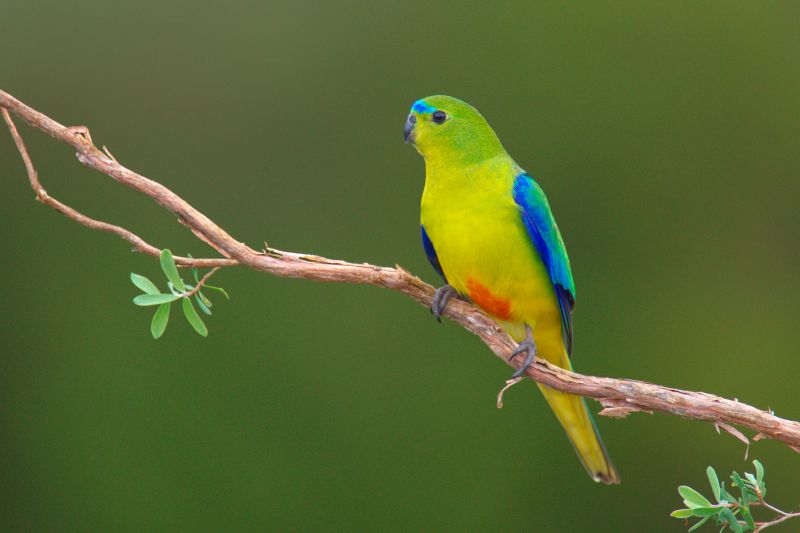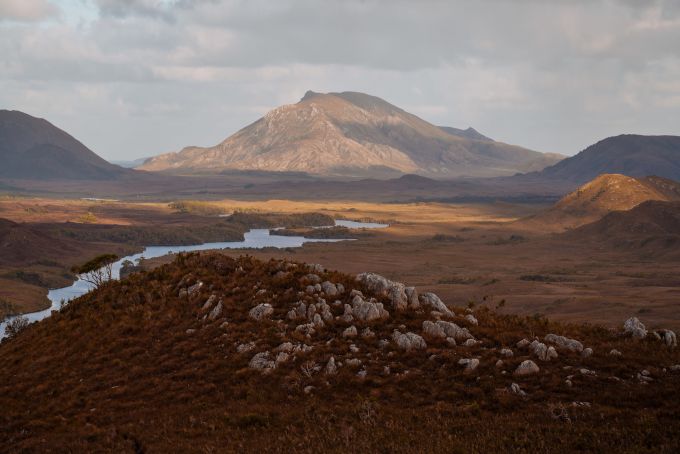There’s only one place in the world where Orange-bellied Parrots (Neophema chrysogaster) breed in the wild, and that’s in Tasmania’s Southwest Wilderness World Heritage Area, a vast and ravishingly beautiful region that is renowned for its wild weather and untamed landscape.

Views from a fixed-wing aircraft over Southwest National Park. Image: Premier Travel Tasmania
“The power and wonder of this magnificent wilderness is hard to describe,” guide Mark Holdsworth explains. “It has to be experienced.” Guests can walk for seven days, travel by boat for two days, or fly into Melaleuca, the base for exploring the Southwest National Park, and the best location in the world for close encounters with the critically endangered Orange-bellied Parrot.
“The entire breeding population calls Melaleuca home and is the focus of the Orange-bellied Parrot monitoring program, which includes the use of feed tables and nest boxes so volunteer observers and biologists can monitor every individual,” Mark explains. “Their hard work provides valuable information to the Orange-bellied Parrot Recovery Team to measure survival and demographic relationships.”

Orange-bellied Parrot. Image: Premier Travel Tasmania
Mark first worked on the Orange-bellied Parrot in the early 1980s in the then Tasmanian Parks and Wildlife Service as a Trainee Ranger, and for 17 years managed the entire Tasmanian Orange-bellied Parrot recovery program, up until his retirement in 2014. Mark has since provided specialist nature guiding services across Australia and he now joins the Premier Travel Tasmania team to share his knowledge with guests who book the Australian Geographic tours.
Watch - Premier Travel Tasmania: Our Story
“Melaleuca has been my backyard throughout my career and I love to share the unique insights I have about the biology and conservation of the Orange-bellied Parrot,” he says. The small (45 grams) and brightly coloured parrot can be seen in Melaleuca from October to March during their breeding season. By April the entire population migrates northward to coastal Victoria and South Australia, where they feed on a range of plants in windswept salt marshes.
“Interestingly, the adults leave from February through to March, while the juveniles manage to find their own way from late March to early April," Mark says. “I’m always amazed how natural instincts are able to successfully drive migration behaviour.”

Southwest Wilderness WHA. Image: Premier Travel Tasmania
If guests visit Melaleuca when the birds are not there, Mark can still chat about the program, and those keen to become more involved in conservation work can join volunteer searches along the coasts of Tasmania, Victoria and South Australia through the Friends of the Orange-bellied Parrot (Wildcare Tasmania) and
BirdLife Australia.
Tasmania - Wildlife & Conservation with Wilderness Flight Safari
Explore Tasmania's untouched beauty across this epic nine day wilderness and wildlife adventure. Featuring Orange-bellied Parrots, Tasmanian Devils and visits to Wineglass Bay and Cradle Mountain and more, this is perfect blend of wilderness, delicious local food and wine and exceptional regional hospitality.

